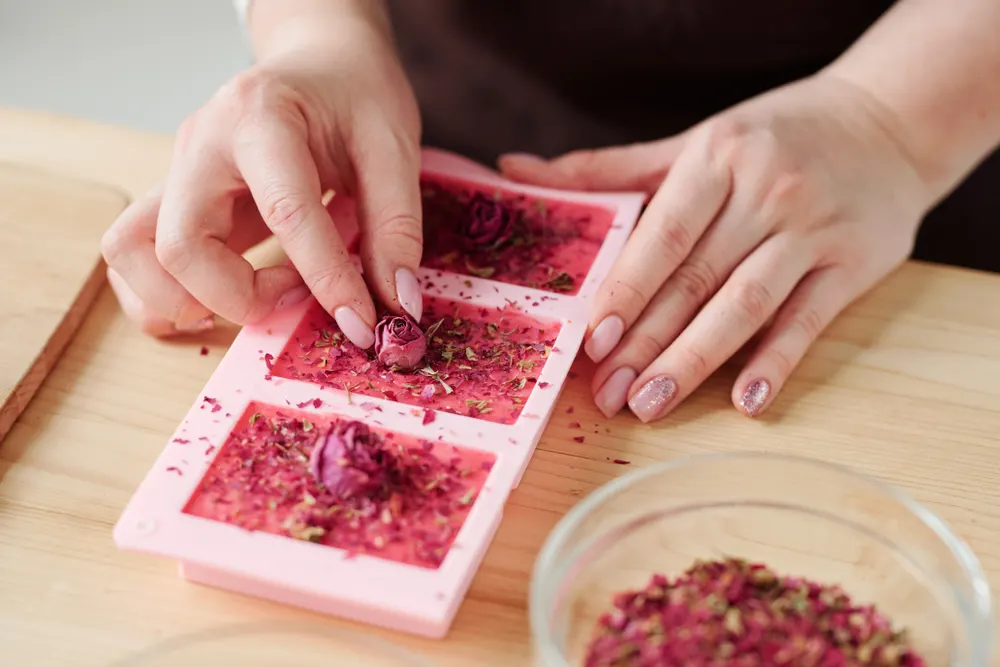
If you are keen to make soap, but a little nervous of the processes involved in making it from scratch, melt and pour soap could be the perfect solution for you.
Melt and pour soap involve choosing a pre-made base. With these bases, saponification has already taken place. This means that there is no lye to handle.
The process of making melt and pour soap is as easy as the name suggests.
All you have to do is melt the pre-made base, add whatever colours, scents and other ingredients you wish, then pour the mix into a mold and wait for it to set.
It really is as simple as that.
The Basics of Melt and Pour Soap Making
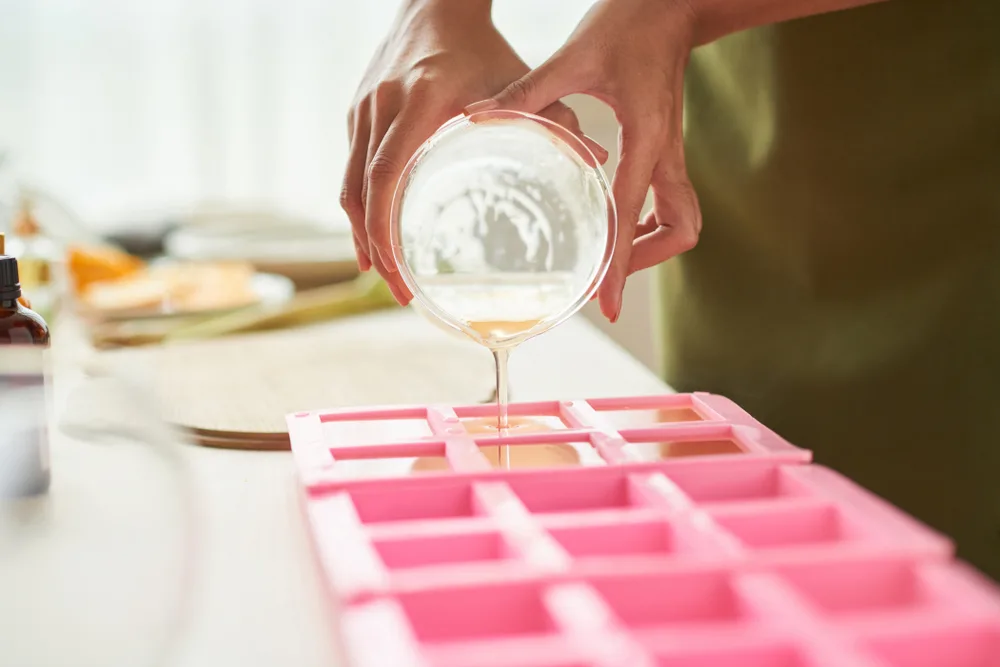
Choosing a Soap Base
The process of making any melt and pour soap begins with choosing a base.
There are a number of different options to choose from. But it is important to understand that not all soap bases are as eco-friendly and natural as you might wish. Some of the most sustainable, natural options are:
- Goats milk soap base.
- Honey soap base.
- Shea butter soap base.
- Oatmeal soap base.
- Natural glycerin soap base.
Once you have decided on a base, you need to decide what you would like to add to the base to create a soap that works well and looks great.
Additions for Your Melt and Pour Soap
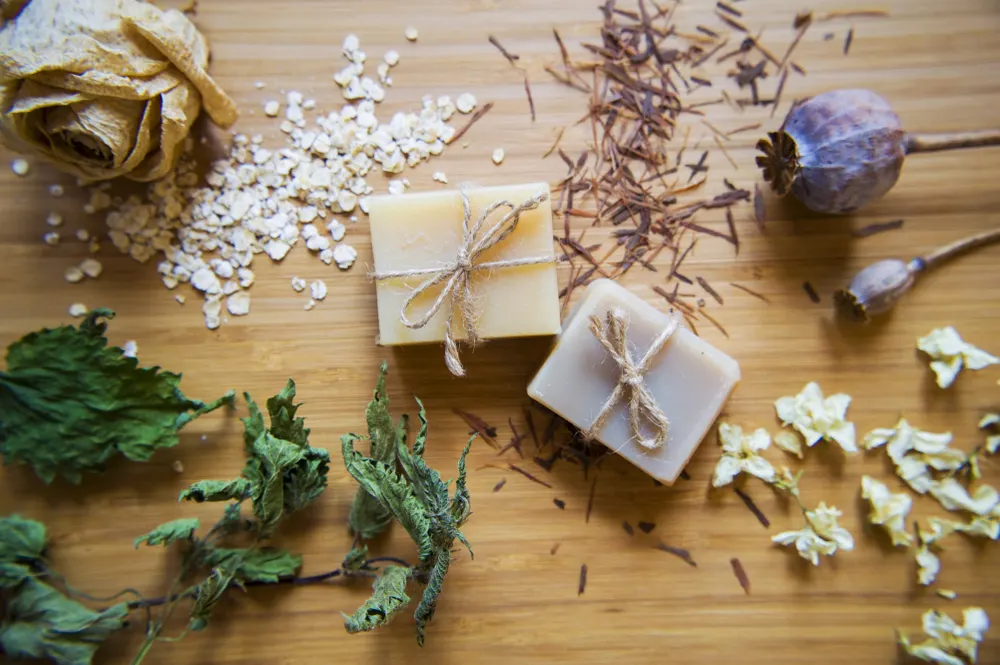
For example, you might want to add:
- Natural Exfoliants – such as salt, oats, coffee grounds etc..
- Herbs and botanicals – for their natural, healthy properties and their appearance.
- Essential oils – for their scent, and beneficial properties.
- Natural pigments or dyes – such as natural clays, minerals, herbs and spices, vegetable-based dyes etc..
There are a wide range of natural additions you can make to create the perfect soaps for your needs.
You could also consider making two-in-one soaps and cleaners, by placing a piece of natural loofah or natural sponge into your melt and pour soap creations.
Molds for Your Simple Soaps
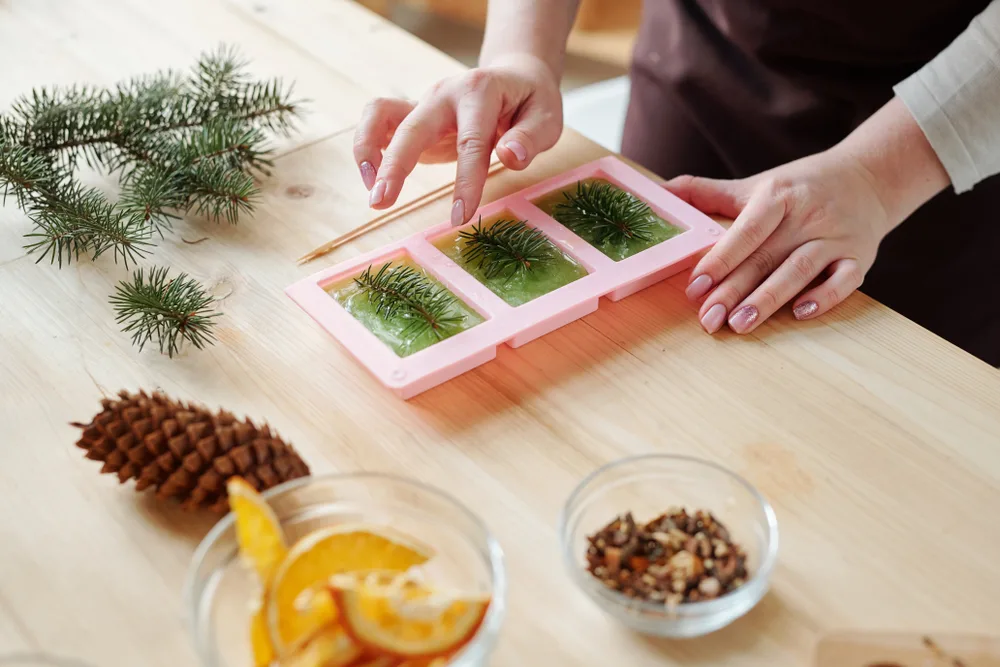
You will also need to buy or make some molds to shape your soaps. There are a great many different options out there to choose from.
You could simply use kitchen items like muffin trays to make your own soaps without having to invest in molds specifically for the purpose.
You could also make your own molds by cutting a milk or juice carton in half, or making your own wooden soap mold, then slicing soap bars from the larger block you create.
If you want round soaps, one simple hack is to use lengths of upcycled plumbing piping as molds.
Of course, you could also choose to buy a wooden, or silicone soap mold.
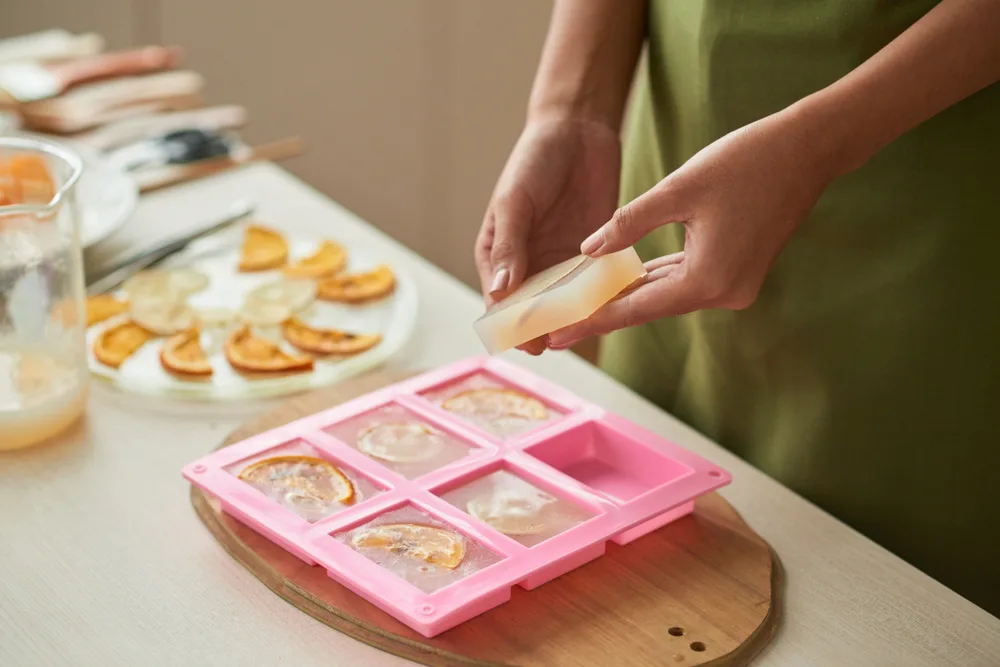
Silicone soap molds allow you to ring the changes and make soaps in a much wider range of shapes and sizes. For example, you can find honeycomb and bee molds, insect molds, heart-shaped molds, flower molds, and many, many more.
You do not have to restrict yourself to merely making soaps in simple, geometric shapes.
Melt and pour recipes are a great way to get started with soap making.
Even children could help you make soap in this way. So it could be a fun activity to enjoy with the whole family.
There is quite a lot of leeway in this activity. Therefore, it is quite easy to experiment, and to develop recipes that work for you.
However, if you are just getting started, it can be helpful to have a few recipes to follow. Here are 15 simple and natural melt and pour soap recipes to inspire you to create your own.
15 Melt & Pour Soap Recipes
1. Milk and Honey Melt and Pour Soap
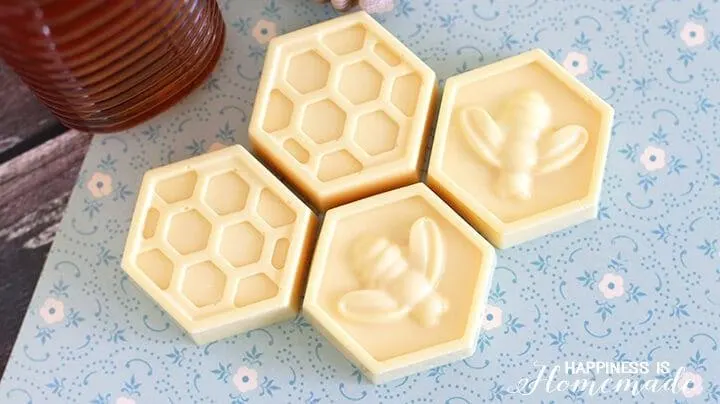
Both goats milk and honey have excellent properties that make them perfect for use on your skin.
This simplest of melt and pour soap making recipes involves combining a goat’s milk soap base with pure, natural organic honey. It can be made in just ten minutes or so, and is naturally moisturising, clarifying, soothing and antibacterial.
10 Minute DIY Milk & Honey Soap @ happinessishomemade.net.
2. Goat’s Milk and Himalayan Salt Soap
This is another easy recipe. It combines a goat’s milk soap base with organic jojoba oil or organic almond oil, Himalayan salts for exfoliation, and essential oils of your choice. (Sweet orange and frankincense are suggested, though many other essential oils can also work well.)
Melt and Pour Goats Milk Recipe @ organic-beauty-recipes.com.
3. Lavender and Rosemary Soap
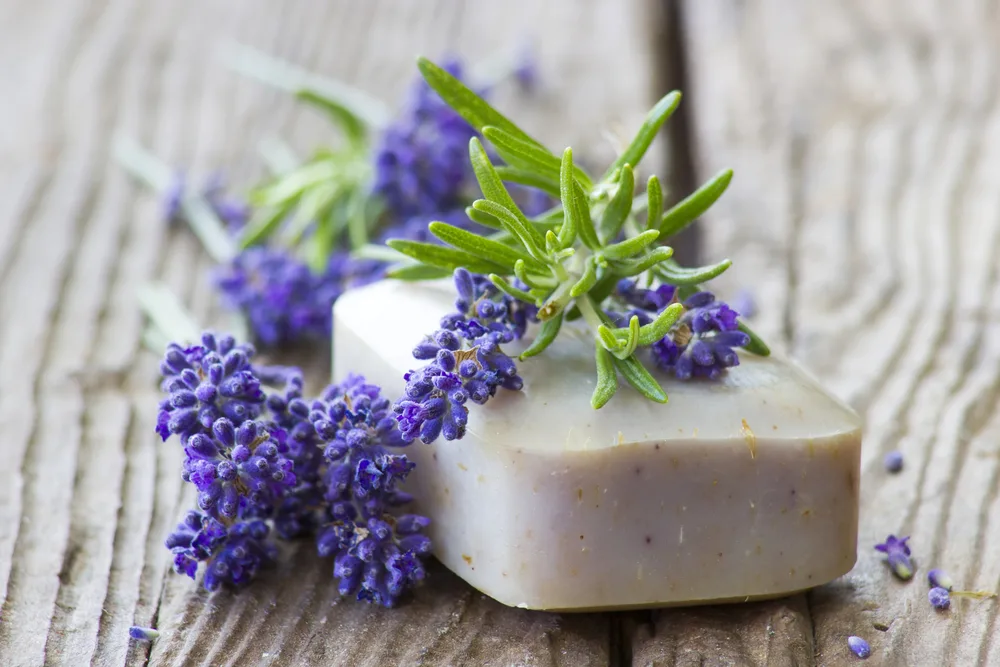
This simple melt and pour soap also uses a goat’s milk base. It enriches that base with rosemary and lavender, in both dried and essential oil form.
Lavender and rosemary both smell great, and also offer a range of health and cosmetic benefits.
Lavender is relaxing. It is also a powerful antiseptic which can kill a range of common bacteria. What is more, it can be soothing, and help prevent the formation of permanent scar tissue. Rosemary can help stimulate blood flow and help circulation, and is a herb often used as a stimulant in aromatherapy.
Lavender and Rosemary Soap @ growingupgabel.com
4. Fresh Aloe Vera and Nettle Leaf Soap
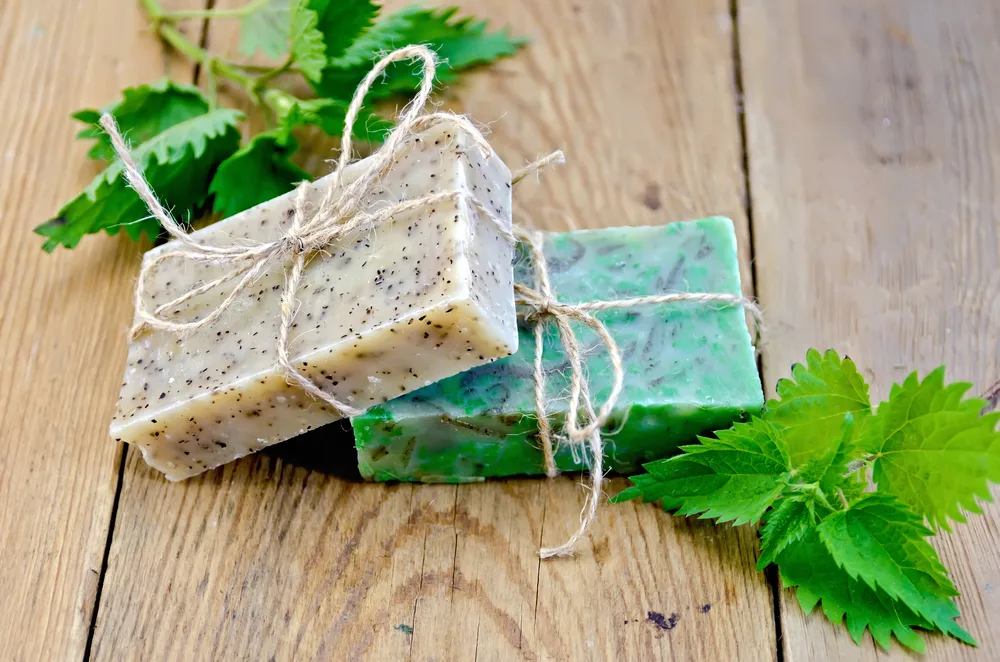
This is an emollient soap that can soothe, soften and protect the skin.
Aloe vera is well known as a healing plant. Dried nettles impart an attractive green flecking to the soap, and nettles are also said to be soothing to the skin and may help with certain skin conditions like eczema and psoriasis.
This recipe adds both of these natural, botanical ingredients to a glycerine soap base.
Fresh aloe vera and nettle leaf soap @ motherearthliving.com.
5. Green Tea and Lemon Melt and Pour Soap
This is a unisex soap that has a smell that can suit both men and women.
A glycerin soap base is used, fragrance comes from a lemon essential oil, and the coloration and many more beneficial properties of this soap come from matcha green tea powder.
Both of these ingredients are loaded with antioxidants that neutralize free radicals. They help, therefore, to minimize skill damage and avoid premature ageing of the skin.
This soap can also improve oily skin and help clear up acne.
Lemon Green Tea Soap @ beautycrafter.com.
6. Calendula, Honey & Oatmeal Melt and Pour Soap
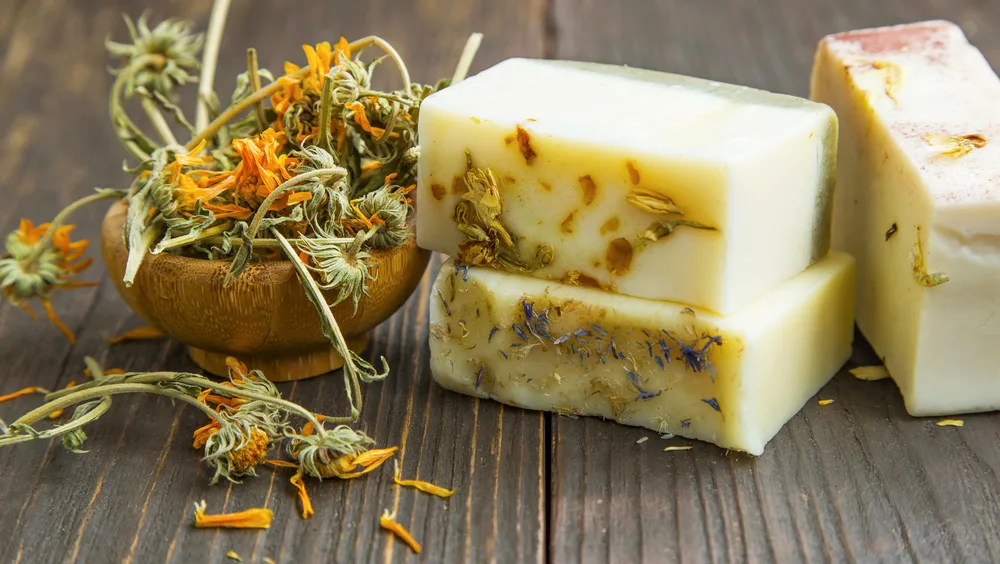
This pretty and soothing soap recipe is another which takes advantage of the naturally healing and enhancing properties of natural ingredients.
Honey is nourishing, moisturising and naturally antibacterial. Calendula has anti-inflammatory properties. And oatmeal is a gentle, natural exfoliant that is also soothing on the skin.
What you are left with is a useful soap that can be enhanced with the essential oils of your choice.
Calendula, Honey & Oatmeal Soap @ motherearthliving.com.
7. Common Plantain Antiseptic Melt and Pour Soap
If you look around you, and do some research into the beneficial properties of the plants around you, you might be amazed by how many options you have to enhance your home-made soaps.
Nettles are not the only ‘weed’ that can be useful in soap-making. Common plantain can also be used – for its natural antiseptic properties.
Find one melt and pour soap recipe including this useful ingredient (using a glycerin base) by following the link below.
Common Plantain Soap @ motherearthliving.com.
8. Matcha & Lemongrass Melt and Pour Soap
This delightful soap recipe uses a glycerin soap base. To this base are added a small amount of shea butter, matcha powder, lemongrass, eucalyptus and cedarwood essential oils.
Matcha’s benefits to the skin have already been mentioned above. Shea butter has anti-inflammatory and healing properties and moisturizes. Lemongrass is an astringent and cleanser, which leaves you with a glowing complexion, and the other essential oils mentioned also sooth and aid healing of the skin.
Lemongrass Melt and Pour Soap Recipe @ organic-beauty-recipes.com.
9. Rosehip & Rose Clay Melt and Pour Soap
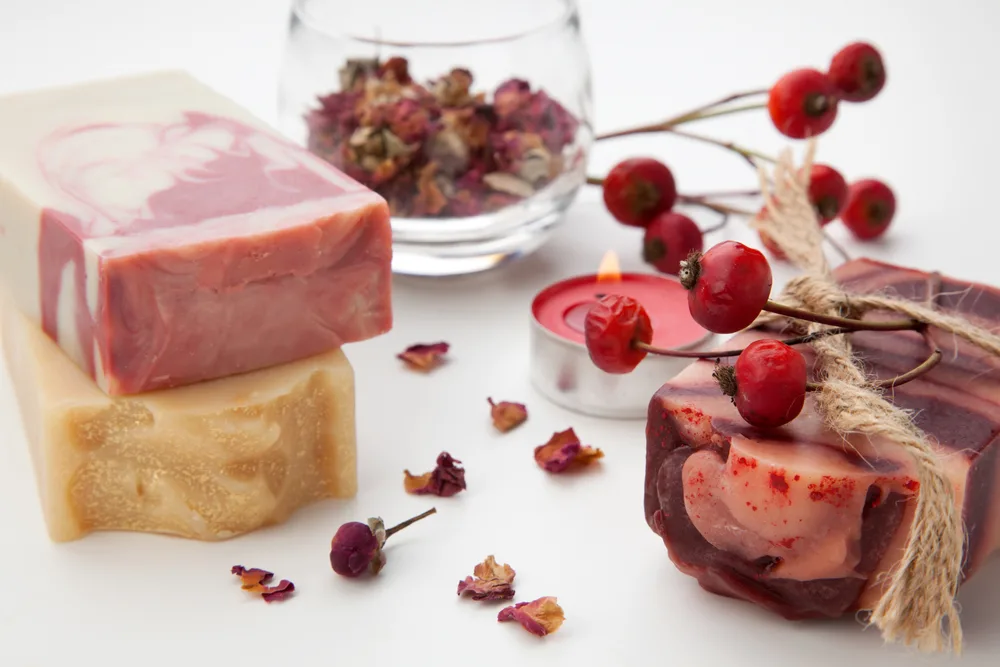
Rosehip powder is an interesting additive for a wide range of beauty recipes. This recipe takes advantage of the beneficial properties of rosehips, which are full of vitamin C.
The combination of rosehip powder with a rose clay creates a lovely soft-pink hue to this delightful soap. It is also enhanced with the addition of poppy seeds for a natural exfoliant, and lavender and lemongrass essential oils.
DIY Rosehip Melt and Pour Soap @ soapqueen.com.
10. French Green Clay and Shea Butter Soap
French green clay is another interesting ingredient to add you your melt and pour soaps.
The recipe that you can find by following the link below is one excellent example of how to use it. This gentle, green soap adds shea butter, French green clay and lavender essential oil to a soap base. The green clay adds colour but is also a gentle exfoliant and skin toner.
French Green Clay and Shea Butter Soap @ mademoiselleorganic.com.
11. Bamboo, Jojoba and Peppermint Soap
Bamboo powder is used as an exfoliant in this minty and refreshing soap. Organic jojoba oil is used as a skin conditioner, and peppermint essential oil provides the fragrance. Of course, you could also choose to add a wide range of other essential oils to this simple melt and pour soap recipe.
Bamboo, Jojoba and Peppermint Melt and Pour Soap @ mademoiselleorganic.com
12. Oatmeal Cinnamon Melt and Pour Soap
Choose a natural and toxin free soap base, and then add cinnamon powder and essential oil.
Cinnamon not only has a pleasant and invigorating fragrance, it is also rich in antioxidants and can help to clear skin blemishes. Oatmeal is sprinkled over the soap for its soothing and exfoliating properties.
Oatmeal Cinnamon Melt and Pour Soap @ yourbeautyblog.com
13. Orange and Peppercorn Melt and Pour Soap
The whole black peppercorns in this soap recipe naturally massage the skin and promote good circulation whenever the soap is used. Meanwhile, orange zest adds little pops of colour, as well as a hint of fragrance. The soap uses a glycerin base, and suggests a combination of clove, basil and lavender essential oils.
Orange and Peppercorn Soap @ soapdelinews.com
14. Turmeric Melt and Pour Soap
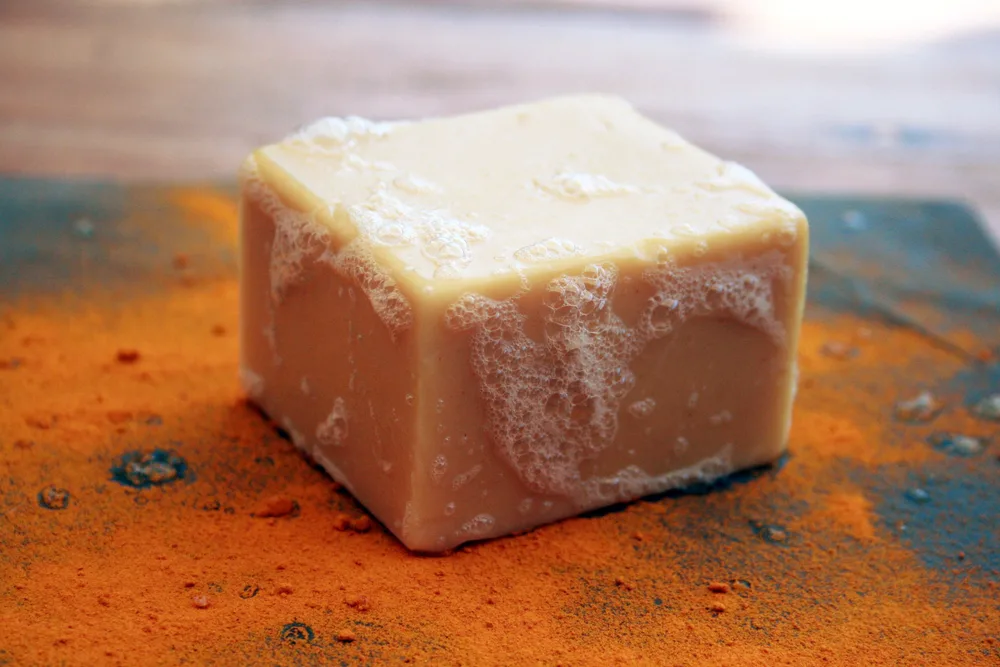
Turmeric imparts a lovely warm yellow hue to your soap. But it has practical benefits too.
This member of the ginger family contains curcumin. This is an antioxidant which is believed to have anti-inflammatory properties. Turmeric also acts as a natural anti-bacterial.
The simple recipe below combines turmeric with a goat’s milk soap base and orange essential oil. But you could also consider adding other ingredients – fresh ginger, for example, might be a good fit.
DIY Turmeric Melt and Pour Soap @ soapqueen.com.
15. DIY Coffee Melt and Pour Soap
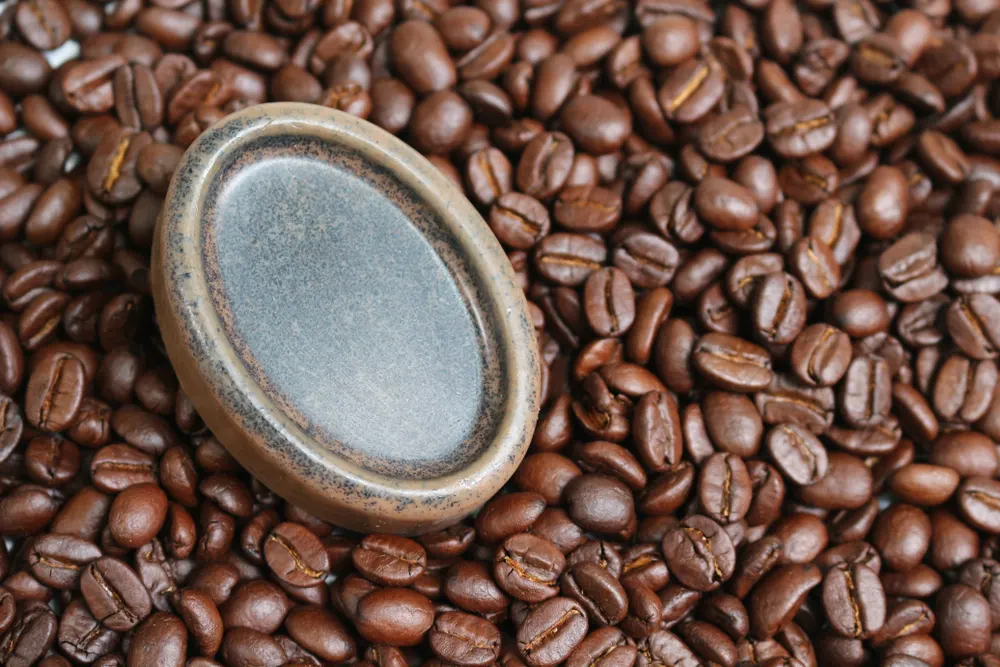
Who doesn’t love the scent of fresh-brewed coffee? This simple melt and pour soap recipe uses coffee both for its fragrance and for its natural exfoliating property.
Caffeine is also a useful anti-inflammatory for the skin, and can make skin less puffy, improve circulation and reduce water retention.
DIY Coffee Soap Recipe @ beautycrafter.com.
These are only a small fraction of the thousands of melt and pour soap recipes that you can find online.
And those are only a fraction of the potential combinations of bases and additional ingredients that you could consider.
It makes sense to begin with something simple, but then to experiment yourself with different options to see which you personally like best.
Once you begin to experiment, you will discover that there are simple melt and pour recipe options for every skin type, every situation, and every individuals own personal tastes.
So, if you are new to soap making and want to start out easy – why not give it a go?
You can then go on to find out more about making your own natural, healthy soap from scratch using both hot process and cold process soap making techniques.
Still feeling crafty?
Why not try making your own hand dipped beeswax candles. Here’s our tutorial for doing that.

Get the famous Rural Sprout newsletter delivered to your inbox.
Including Sunday musings from our editor, Tracey, as well as “What’s Up Wednesday” our roundup of what’s in season and new article updates and alerts.

